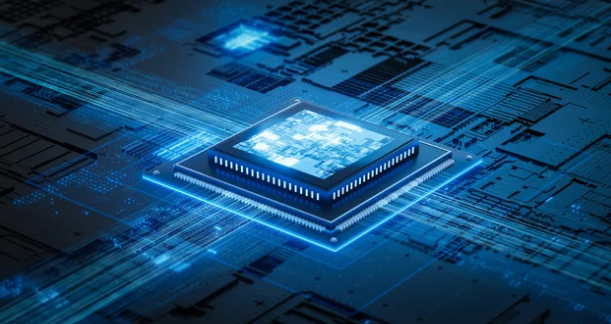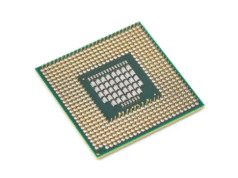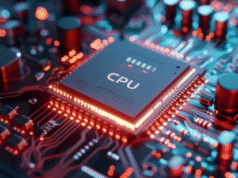The Central Processing Unit (CPU) is the beating heart of modern computing. From powering pocket-sized smartphones to running colossal data centers, the CPU has come a long way since its humble beginnings. In this article, we trace the incredible evolution of the CPU—from the world’s first commercial microprocessor, the Intel 4004, to today’s multi-core, AI-enhanced performance monsters.
Let’s explore how CPU technology has advanced over the decades, shaping the digital world we live in today.
The Birth of the CPU: Intel 4004 (1971)
The story of the CPU began in 1971 with the Intel 4004, the world’s first commercially available microprocessor. Originally developed for a calculator, this tiny chip contained 2,300 transistors and could process 60,000 operations per second.
Key features of the Intel 4004:
- 4-bit processor
- Clock speed: 740 kHz
- Built using 10-micron technology
- Packaged in a 16-pin ceramic DIP
Though primitive by today’s standards, the 4004 paved the way for programmable, general-purpose computing, marking a revolutionary milestone in the history of electronics.
The Rise of 8-bit and 16-bit CPUs (1970s–1980s)
Following the 4004, Intel launched more powerful successors:
- Intel 8008 (1972): An 8-bit processor with enhanced memory addressing.
- Intel 8080 (1974): Widely regarded as the first truly usable CPU for personal computers.
- Intel 8086 (1978): A 16-bit processor that introduced the x86 architecture, a foundation still used in today’s CPUs.
Meanwhile, competitors like Motorola and Zilog released their own CPUs (e.g., the Motorola 6800 and Zilog Z80), which found homes in early personal computers like the Apple II, TRS-80, and Commodore 64.
These processors made home computing possible, giving birth to the PC revolution.
The 1980s and 1990s: The Golden Age of x86
During the 1980s and 1990s, Intel dominated the CPU market with increasingly powerful chips:
- Intel 80286 (1982): Introduced protected mode, allowing multitasking.
- Intel 80386 (1985): A 32-bit chip with virtual memory support.
- Intel 80486 (1989): Included a built-in math coprocessor.
- Pentium Series (1993): Marked a major jump in performance with pipelining and superscalar architecture.
This era also saw the rise of Microsoft Windows, which relied heavily on x86-based CPUs, further solidifying Intel’s dominance. The personal computer evolved from a business tool into a mainstream household necessity.
AMD Enters the Game
Advanced Micro Devices (AMD) emerged as a serious competitor in the 1990s with their own x86-compatible CPUs. In 1999, AMD released the Athlon processor, which was the first to reach 1 GHz, beating Intel in the clock-speed race.
Over time, AMD pushed innovation further by introducing:
- 64-bit architecture (AMD64)
- Multi-core processors (Athlon 64 X2)
- High-performance CPUs (Ryzen series)
AMD’s fierce competition forced Intel to innovate faster, fueling rapid advancements in CPU design and performance.
The Multi-Core Revolution (2000s)
By the early 2000s, increasing clock speeds ran into thermal and power limitations. The solution? More cores instead of faster cores.
Key developments:
- Dual-core CPUs became standard for desktops and laptops.
- Quad-core and octa-core processors emerged for enthusiasts and professionals.
- Software started adapting to take advantage of multiple cores, improving multitasking and parallel computing.
Intel’s Core series (Core i3, i5, i7, i9) and AMD’s Phenom and Ryzen lines became household names. CPUs were no longer judged only by clock speed but by the number of cores and threads they could handle.
The Mobile CPU Boom
In the 2010s, the computing landscape expanded to include smartphones and tablets. This era was dominated by ARM architecture, known for its power efficiency and compact design.
- Apple, Qualcomm, Samsung, and MediaTek developed powerful ARM-based chips.
- In 2020, Apple shocked the industry by transitioning its Mac lineup from Intel to its own ARM-based M1 chips, delivering massive performance gains and efficiency.
ARM CPUs now dominate the mobile world and are rapidly gaining ground in laptops and even data centers.
The Rise of Integrated Graphics and AI Acceleration
Modern CPUs are no longer just about raw power. They also integrate features like:
- Integrated GPUs for casual gaming and media processing.
- Neural Processing Units (NPUs) for AI workloads.
- Security features like Intel’s SGX and AMD’s SEV for data protection.
These enhancements allow CPUs to handle AI-driven tasks, like voice assistants, facial recognition, and real-time image processing, right on the device.
Current Generation CPU Powerhouses
Today’s CPUs are marvels of engineering. Let’s look at some recent advancements:
Intel Core 14th Gen (Raptor Lake Refresh)
- Up to 24 cores (8 Performance + 16 Efficiency)
- Turbo Boost speeds over 6 GHz
- Intel Thread Director optimizes tasks across cores
AMD Ryzen 7000 Series
- Built on 5nm Zen 4 architecture
- High energy efficiency with massive performance per watt
- Compatible with DDR5 and PCIe 5.0
Apple M2 and M3 Chips
- ARM-based, highly integrated SoCs (System on Chips)
- Blazing-fast unified memory
- AI-enhanced workflows and top-tier battery life
These processors are capable of real-time 4K/8K video editing, advanced gaming, 3D rendering, and AI modeling—tasks that were once reserved for supercomputers.
CPUs of the Future
Looking forward, the CPU landscape is heading toward:
- Smaller transistor sizes (3nm and below)
- Chiplet architecture: Multiple dies in one processor package
- Hybrid cores: Mixing performance and efficiency cores (like Intel’s P-cores and E-cores)
- Quantum and optical computing: Still in experimental stages but potentially revolutionary
- Greater AI and machine learning integration
The line between CPUs, GPUs, and other specialized chips is becoming increasingly blurred as heterogeneous computing becomes the new norm.
Conclusion: From Microchip to Megabrain
From the Intel 4004’s humble 2,300 transistors to modern CPUs with tens of billions, the central processor has undergone a remarkable transformation. It has grown from a basic calculator brain into a multi-functional digital powerhouse driving nearly every modern device.
Understanding the history of the CPU helps us appreciate not just how far we’ve come, but also where we’re headed. As computing demands grow, the CPU will remain at the center of innovation—adapting, evolving, and empowering the digital world.
Also Read :
- Why the CPU Matters More Than You Think
- CPU Architecture Explained: x86, ARM, and Beyond
- What Makes a CPU Fast? Understanding Clock Speed, Cores, and Threads
- The Evolution of the CPU: From Single Core to Multi-Core Monsters
- CPU vs GPU: What’s the Difference and Why It Matters
















